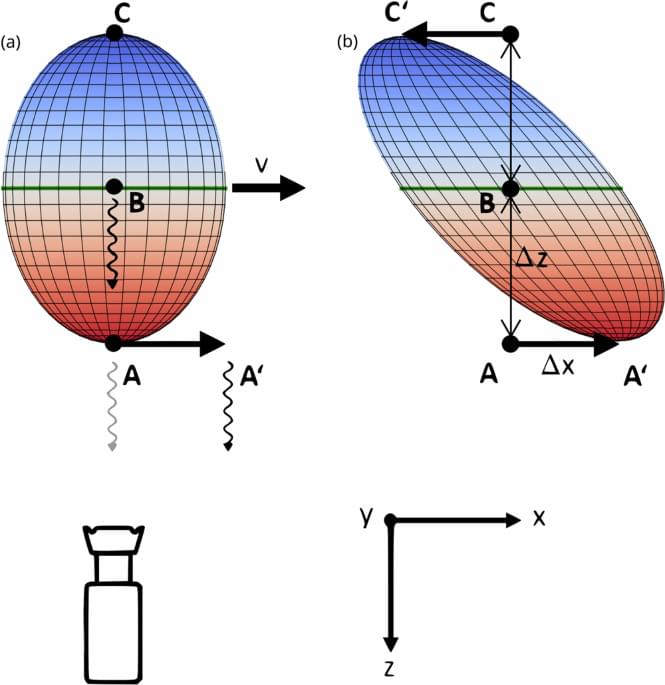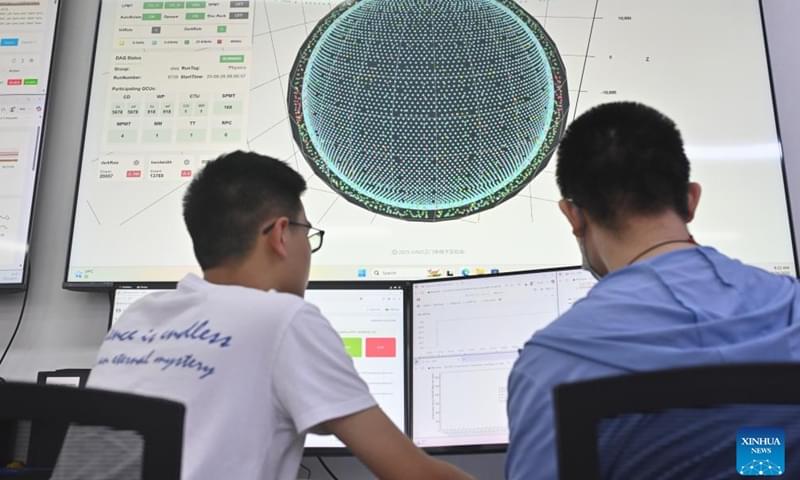
Get the latest international news and world events from around the world.

It Took Physicists 50 Years To Prove Einstein Right About This
Increase your problem solving skills with Brilliant! Start learning science and maths for free at https://brilliant.org/sabine/ and get 20% off a premium subscription, which includes daily unlimited access!
Over a century ago, Einstein wrote his theories of special relativity and general relativity. Within those theories, he predicted that, as an object moves faster, it slightly contracts in length. However, 50 years later Penrose and Terrell predicted that what one would see is instead that the object is rotated. In a recent experiment, physicists proved that this Penrose-Terrell effect is actually real. Let’s take a look.
Paper: https://www.nature.com/articles/s4200… to what I say: The object (frame) they used is obviously not a cube (as you can see in the photo), it has dimensions of 1 × 1 × 0.6 m. 🤓 Check out my new quiz app ➜ http://quizwithit.com/ 📚 Buy my book ➜ https://amzn.to/3HSAWJW 💌 Support me on Donorbox ➜ https://donorbox.org/swtg 📝 Transcripts and written news on Substack ➜ https://sciencewtg.substack.com/ 👉 Transcript with links to references on Patreon ➜ / sabine 📩 Free weekly science newsletter ➜ https://sabinehossenfelder.com/newsle… 👂 Audio only podcast ➜ https://open.spotify.com/show/0MkNfXl… 🔗 Join this channel to get access to perks ➜
/ @sabinehossenfelder #science #sciencenews #physics #relativity.
Correction to what I say: The object (frame) they used is obviously not a cube (as you can see in the photo), it has dimensions of 1 × 1 × 0.6 m.
🤓 Check out my new quiz app ➜ http://quizwithit.com/
📚 Buy my book ➜ https://amzn.to/3HSAWJW
💌 Support me on Donorbox ➜ https://donorbox.org/swtg.
📝 Transcripts and written news on Substack ➜ https://sciencewtg.substack.com/
👉 Transcript with links to references on Patreon ➜ / sabine.
📩 Free weekly science newsletter ➜ https://sabinehossenfelder.com/newsle…
👂 Audio only podcast ➜ https://open.spotify.com/show/0MkNfXl…
🔗 Join this channel to get access to perks ➜
/ @sabinehossenfelder.
#science #sciencenews #physics #relativity

A snapshot of relativistic motion: visualizing the Terrell-Penrose effect
The Terrell-Penrose effect states that the relativistic Lorentz contraction of fast-moving objects cannot be seen in a photograph, but it has never been verified due to the requirement of relativistic speeds of the moving object. Using femtosecond laser pulses and ultrafast photography, and virtually reducing the speed of light, the authors demonstrate the accuracy of this statement.
Scientists Reveal a Theory Suggesting Another Reality Has Been Overlapping Ours
If you think about it, physics has always advanced because of strange little clues that didn’t seem to fit. Mercury’s orbit was off by a tiny fraction; that small mismatch eventually gave us Einstein’s theory of relativity.
The ultraviolet catastrophe in blackbody radiation didn’t make sense because the crisis opened the door to quantum mechanics. So whenever something doesn’t quite add up, it’s worth paying attention. Extra dimensions enter the story because of exactly this kind of mismatch.
If extra dimensions are real, then the forces of nature might not be as separate as they look. Gravity might only appear weak because it’s spread across hidden dimensions, while the other forces are stuck to the space we can see. That would mean unification: the dream of combining all forces under one theory isn’t just possible, but natural.
Thank you for watching.
▀▀▀▀▀▀
Timestamps.
0:00 Extra Dimensions.


New Study Raises “Disturbing Prospect” About Alien Civilizations Using Dyson Swarms
“This raises a disturbing prospect—a Kardashev Type III metasociety may annihilate planetary systems as it expands to stabilize their megaswarms, leaving everything within its ‘bubble’ barren of planets. If those megaswarms then are destroyed anyway, no planets will remain on which to restart life,” the paper explains.
“Furthermore, in most early-type galaxies, there will be no star formation to ever replace them. Thus, the megaswarms portend doom, and leave behind a permanently sterilized galaxy in their wake.”
Maybe we don’t want to detect one after all.

MIT Invents Injectable Brain Chips
Not exactly a brain chip per se by a bit of nanotech.
While companies like Elon Musk’s Neuralink are hard at work on brain-computer interfaces that require surgery to cut open the skull and insert a complex array of wires into a person’s head, a team of researchers at MIT have been researching a wireless electronic brain implant that they say could provide a non-invasive alternative that makes the technology far easier to access.
They describe the system, called Circulatronics, as more of a treatment platform than a one-off brain chip. Working with researchers from Wellesley College and Harvard University, the MIT team recently released a paper on the new technology, which they describe as an autonomous bioelectronic implant.
As New Atlas points out, the Circulatronics platform starts with an injectable swarm of sub-cellular sized wireless electronic devices, or “SWEDs,” which can travel into inflamed regions of the patient’s brain after being injected into the bloodstream. They do so by fusing with living immune cells, called monocytes, forming a sort of cellular cyborg.

China’s JUNO announces first physics result after two-month commissioning
Researchers work at a control room of the Jiangmen Underground Neutrino Observatory (JUNO) in Jiangmen, south China’s Guangdong Province, Aug. 26, 2025. The world’s largest transparent spherical detector began operation in China on Tuesday, making it the world’s first operational ultra-large scientific facility dedicated to neutrino research with ultra-high precision. Having completed the filling of its 20,000-tonne liquid scintillator detector, JUNO in Guangdong began taking data after more than a decade of preparation and construction. (Photo by Liu Yuexiang/Xinhua)
Listen To The Sounds Of Ancient Languages Brought To Life By AI
Ever wondered what ancient languages sounded like?

Epstein-Barr Virus Alters B Cells, Possibly Driving Lupus
Epstein-Barr virus (EBV) infected and reprogrammed autoreactive B cells in patients with systemic lupus erythematosus (SLE) to become activated antigen-presenting cells. EBV-infected B cells in patients with SLE showed increased antigen-presenting capabilities, unlike those in healthy control individuals, and may serve as drivers of systemic autoimmune responses.
Epstein-Barr virus reprograms autoreactive B cells, possibly contributing to systemic lupus erythematosus, with infected B cells in patients showing high antigen-presenting capabilities.